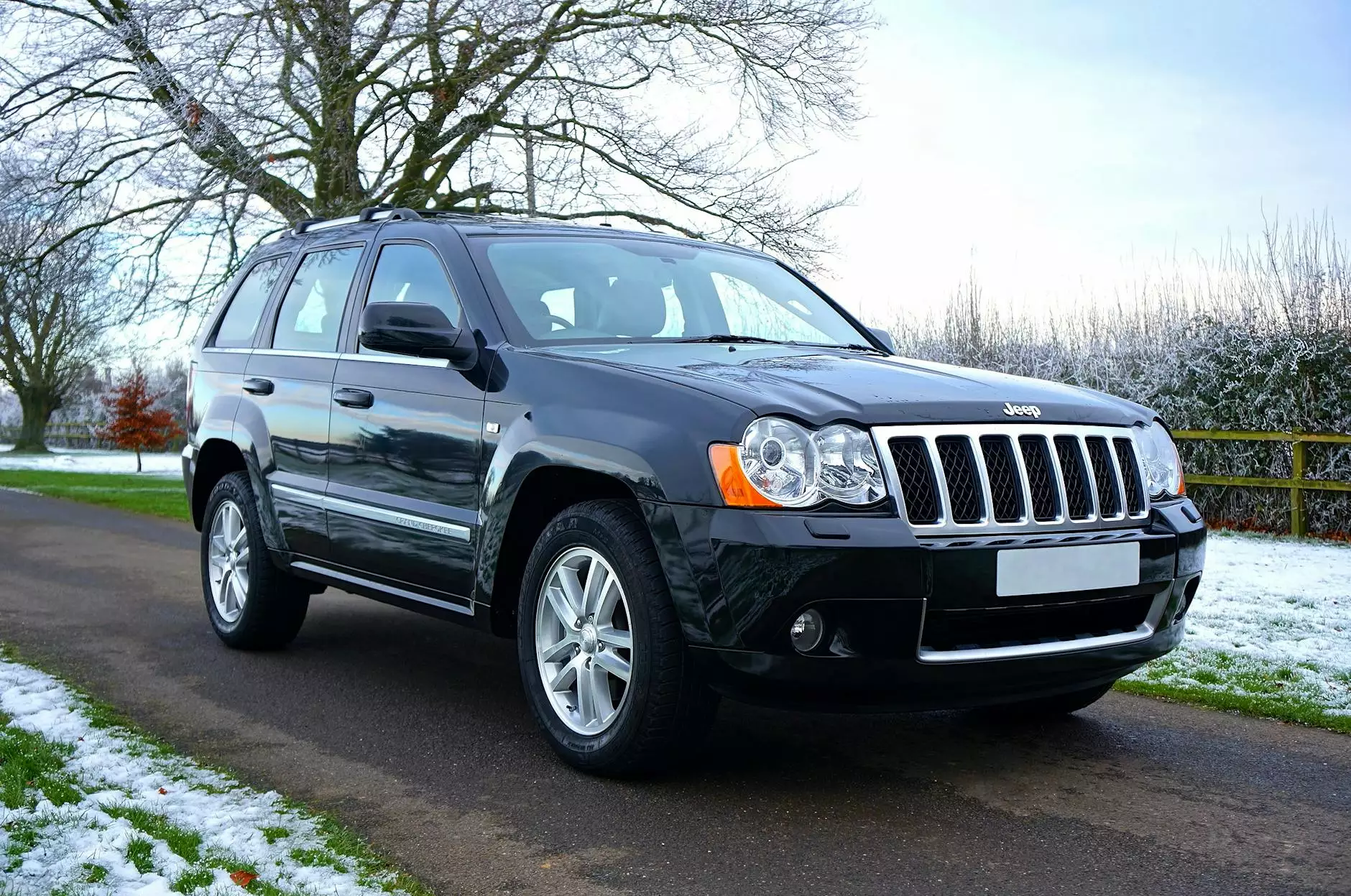Comprehensive Guide to External Rotation of Humerus: Unlocking Shoulder Mobility & Injury Prevention

The external rotation of humerus is a fundamental movement crucial for shoulder health, athletic performance, and overall upper limb functionality. Whether you're a healthcare professional, an athlete, or someone seeking to improve shoulder mobility, understanding this complex motion is essential for optimal wellness and injury prevention.
Understanding the Anatomy and Physiology of External Rotation of the Humerus
The shoulder joint, also known as the glenohumeral joint, is the most mobile joint in the human body. It allows a wide range of motions, including flexion, extension, abduction, adduction, internal rotation, and external rotation. The movement involved in external rotation of the humerus primarily engages specific muscles, ligaments, and joint structures that work synergistically to facilitate smooth, controlled motion.
Anatomical Structures Involved in External Rotation
- Glenohumeral Joint: The ball-and-socket joint formed by the head of the humerus and the glenoid cavity of the scapula.
- Rotator Cuff Muscles: The key stabilizers and movers during external rotation include the infraspinatus and teres minor.
- Deltoid Muscle: Assists in shoulder movement but plays a secondary role during external rotation.
- Capsuloligamentous Structures: These provide stability, especially during rotational movements.
The Role of Muscles in External Rotation
The infraspinatus and teres minor are the primary muscles responsible for external rotation. They are part of the rotator cuff group, providing both mobility and stability. The posterior deltoid assists in this motion but is more involved in shoulder extension and lateral rotation. Proper functioning of these muscles ensures a full, unrestricted range of external rotation.
Biomechanics of External Rotation of the Humerus
The external rotation of the humerus involves the rotation of the upper arm outward, away from the midline of the body. This movement is initiated by the contraction of the infraspinatus and teres minor muscles, which pull the humeral head posteriorly and laterally within the glenoid cavity.
During external rotation, the humeral head rotates externally in relation to the scapula, which often remains stabilized during isolated movements. The motion is facilitated by the alignment of joint surfaces and supportive soft tissue structures, which allow controlled, smooth rotation without excessive shear stress.
Clinical Significance of External Rotation of Humerus
Importance in Daily Activities and Athletic Performance
External rotation is vital for numerous daily activities such as brushing hair, reaching behind, and throwing. In sports, especially those involving overhead motions like tennis, baseball, and swimming, proper external rotation enhances performance and reduces injury risks.
Common Shoulder Injuries Related to External Rotation
- Rotator Cuff Tears: Damage to the infraspinatus or teres minor can impair external rotation and shoulder stability.
- Dislocations: Excessive external rotation can predispose the shoulder to anterior dislocation.
- Impingement Syndromes: Limited or painful external rotation may be a sign of subacromial impingement or rotator cuff tendinopathy.
Athletic and Occupational Considerations
Understanding the mechanics of external rotation can help athletes develop training programs that enhance mobility and strength, thereby preventing injuries such as rotator cuff tendinitis or impingement syndromes. Similarly, workers engaged in overhead or repetitive arm movements benefit from targeted exercises to maintain optimal external rotation range.
Rehabilitation and Training for External Rotation of the Humerus
Effective Exercises to Improve External Rotation
- Sidelying External Rotation: Lying on your side with the affected arm supported, externally rotate the humerus by bending the elbow to 90 degrees and rotating the forearm upward.
- Theraband External Rotation: Attach a resistance band to a stable surface; with elbow at side, rotate the forearm outward against resistance, focusing on controlled movement.
- Doorway External Rotation Stretch: Place the forearm on a doorway frame and gently lean forward to stretch the posterior shoulder structures.
- External Rotation with Dumbbell or Cable: Perform controlled external rotation movements with added resistance to strengthen rotator cuff muscles.
Rehabilitation Principles
- Gradual Progression: Increase resistance and complexity slowly to prevent strain.
- Balanced Training: Incorporate exercises targeting both internal and external rotators for balanced shoulder stability.
- Functional Integration: Integrate external rotation into functional and sport-specific movements to enhance performance.
- Addressing Imbalances: Correct asymmetries that can predispose to injury.
Preventative Measures & Best Practices
- Regularly stretch and strengthen shoulder muscles.
- Maintain proper technique during athletic or occupational activities.
- Ensure adequate warm-up and cool-down routines.
- Seek professional guidance for persistent shoulder pain or dysfunction.
The Role of Healthcare Professionals in Managing External Rotation Issues
Chiropractors, physical therapists, and sports medicine specialists play a pivotal role in diagnosing and treating issues related to external rotation of humerus. Their expertise is crucial for developing individualized treatment plans that include manual therapy, corrective exercises, and education.
At iaom-us.com, we specialize in health & medical services with comprehensive focuses on advanced chiropractic care, education, and injury prevention strategies. Our mission is to empower individuals to achieve optimal shoulder function through cutting-edge techniques, evidence-based rehabilitation, and personalized treatment approaches.
Future Trends and Innovations in External Rotation Therapy and Business Growth
The business of health, particularly in the realm of chiropractic and physical therapy, is rapidly evolving with technological advancements. Telehealth consultations, wearable biomechanical sensors, and AI-driven rehabilitation programs are transforming how professionals and patients approach shoulder health.
By leveraging these innovations, companies like iaom-us.com are expanding their offerings, connecting more people with expert care, and fostering a community centered on preventive health and sustainable mobility improvement.
Why Investing in External Rotation Health Benefits Your Business and Personal Well-being
For business owners and health practitioners, emphasizing the importance of external rotation of humerus presents an opportunity to enhance service portfolios, attract new clients, and promote long-term health outcomes.
From a personal perspective, prioritizing shoulder health leads to:
- Enhanced Performance: Better athletic, occupational, and daily function.
- Injury Prevention: Reduced risk of complex shoulder injuries that can impair quality of life.
- Longevity and Mobility: Maintaining shoulder flexibility and strength well into older age.
Conclusion: Embracing Knowledge and Innovation to Optimize Shoulder Function
The external rotation of humerus is a vital component of shoulder health that demands attention from both practitioners and individuals committed to maintaining optimal upper limb function. Through comprehensive understanding, targeted exercises, and innovative therapies, one can improve mobility, prevent injuries, and enhance overall physical performance.
At iaom-us.com, our dedication to advancing health, education, and chiropractic care makes us a trusted partner for those seeking expert guidance and cutting-edge treatments in shoulder rehabilitation and healthcare business growth.
Investing in the knowledge and proper management of shoulder mechanics is a smart choice—whether for personal health, athletic excellence, or expanding your health-centered business. Unlock the full potential of the external rotation of humerus today and support a future of health and movement excellence.









